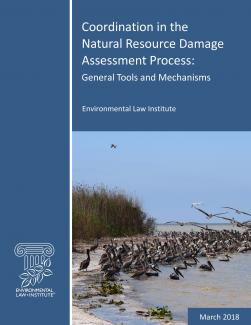
As a result of the Deepwater Horizon oil spill, a number of different funding processes have been put in place to help restore and recover the Gulf of Mexico. The three main ones are the natural resource damage assessment (NRDA), the RESTORE Act, and the National Fish & Wildlife Foundation (NFWF) Gulf Environmental Benefit Fund (GEBF), which together will distribute over $16 billion. Each of these processes has its own objectives, timelines, governance structure, and opportunities for the public to engage. These processes also involve a number of different federal, state, and other entities. At the same time, there are a number of federal, state, and local programs that were in place prior to the spill. Coordination among these varied efforts will therefore be essential.
This paper focuses on some of the tools and mechanisms that are available to help coordinate one of these efforts – the Deepwater Horizon NRDA. The NRDA process is being managed by a group of federal and state agency representatives (called “trustees”). Responsibilities are divided among three main groups: a Gulf-wide Trustee Council, area-focused Trustee Implementation Groups (TIGs), and individual trustee agencies.